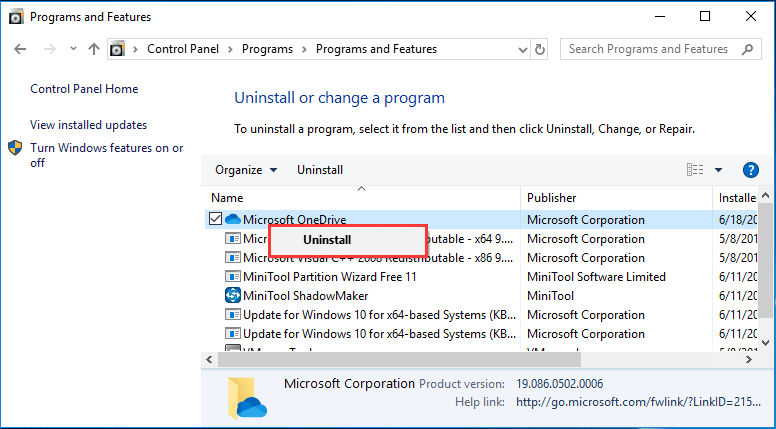

- WHAT IS ONE DRIVE MICROSOFT AND IS IT SAFE HOW TO
- WHAT IS ONE DRIVE MICROSOFT AND IS IT SAFE FULL
- WHAT IS ONE DRIVE MICROSOFT AND IS IT SAFE WINDOWS 10
- WHAT IS ONE DRIVE MICROSOFT AND IS IT SAFE PORTABLE
- WHAT IS ONE DRIVE MICROSOFT AND IS IT SAFE SOFTWARE
Tip: Most downloadable operating systems such as Windows and Linux distros are distributed as ISO images.
WHAT IS ONE DRIVE MICROSOFT AND IS IT SAFE SOFTWARE
In a word, this software is an ISO burner that is mostly used to format and create bootable USB flash drives or Live USBs with an ISO file easily.
Rufus allows users to format their USB flash drives to FAT, NTFS, FAT32, exFAT, UDF, and ReFS file systems, set the cluster size, and edit the volume label. It supports two partition schemes ( MBR and GPT) for users who want to create a bootable media with ISO image. It provides advanced boot selection, including Syslinux 4.07, Syslinux 6.04, ReactOS, Grub 2.04, Grub4DOS 0.4.6a, and UEFI:NTFS. WHAT IS ONE DRIVE MICROSOFT AND IS IT SAFE FULL
It also allows users to create a full DOS-compatible environment to run legacy tools with FreeDOS and the MBR partition Scheme. And they can configure the release, edition, language, and architecture type according to their needs. 
WHAT IS ONE DRIVE MICROSOFT AND IS IT SAFE WINDOWS 10
Users can use Rufus to download an ISO image of Windows 10 or 8.1 to their computer. It supports various bootable ISO files, including some Linux distributions and Windows installation ISO files, and raw disk image files. Rufus enables users to create a bootable USB flash drive using an ISO file. To better understand this utility, let’s see its features: WHAT IS ONE DRIVE MICROSOFT AND IS IT SAFE PORTABLE
It is a free and portable application that doesn’t require installation. Rufus, short for The Reliable USB Formatting Utility, with Source, is the software developed by Pete Batard.
WHAT IS ONE DRIVE MICROSOFT AND IS IT SAFE HOW TO
How to Create a Bootable USB Flash Drive Without Rufus. Stalina Zoir writes for Pcloud, a Switzerland-based secure cloud storage company. With the evolution of the pricing models, including Lifetime options, external hard drives may eventually go the way of the compact disc. They also take care of additional data concerns like file recovery and remote access. Cloud services are becoming cheaper and more accessible every year. In the end, cloud-based solutions are the overall winner for us. In this case, you’re paying for storage, recovery and even more options, which make cloud storage cheaper in regards to the quality of service you get. However, the price includes advanced file recovery options. Unfortunately, the warranty does not include file recovery, which can cost as much as $1,500, and which, depending on the nature of the failure, may be ineffective.Ĭloud services may seem more expensive due to their subscription-based pricing model. Some external drives also come with an additional warranty in case of failure. The more you pay, the more storage you get. External drives have relatively linear pricing. Putting aside all other arguments, cost is probably the trickiest factor to consider. If you’re working on the go and don’t have Internet connection, sync helps you get the job done. Selective sync allows you to connect your local folders with the cloud. Sync technology is one feature that’s incredibly handy, but rarely discussed. While these are what we consider to be the best cloud hosting providers. And this is our curated list of best cloud storage for photo. These are the best free cloud storage services of 2018. By the time files are uploaded they're already unreadable by anyone other than the user. However, in recent years more and more new cloud storage apps have been deploying advanced encryption standards that ensure your data is safe at all times.Įuropean cloud services encrypt user files before they transfer to their servers. Security and the cloud haven’t always gone together either. 
However, a lot of people seem to miss this part – while a hard drive warranty will replace your HDD, it won’t bring lost files back. With external drives, you’re in charge of security. Access is so much easier, because you only need a web browser and working internet connection to access your files. Most cloud storage services have dedicated apps for most major clients. On the other hand, cloud storage gives you the freedom to back up files on any internet-connected device, without plugging anything in. We have files on our phone, on our home laptop and on office computers, but an external drive can only back up data on the device it's connected to. What about the cloud? Cloud storage maybe not be as fast as external drives but it does take care of a fundamental problem external HDDs can’t fix: reliability.







 0 kommentar(er)
0 kommentar(er)
